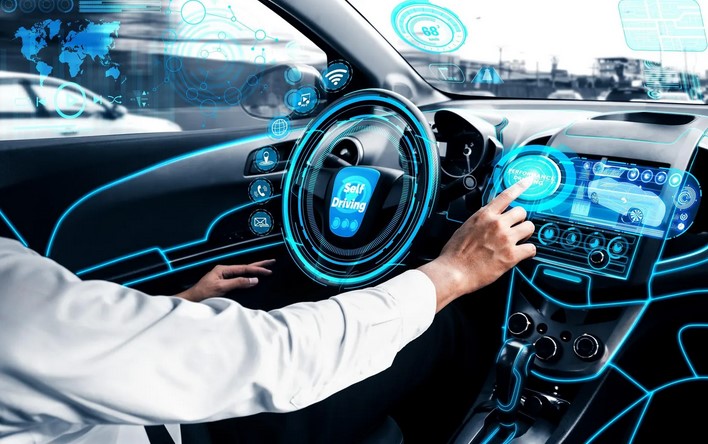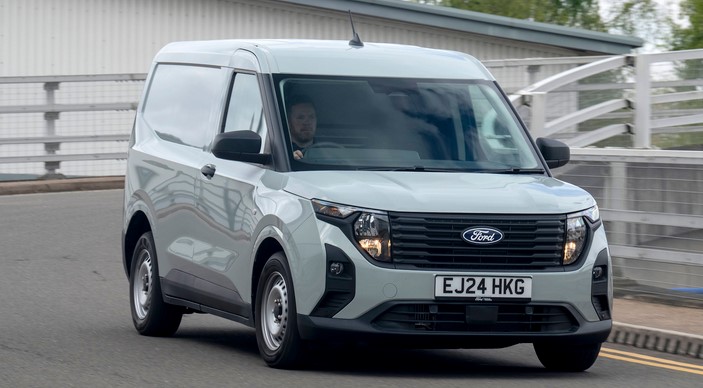
Self-driving cars have moved from science fiction to real-world testing, and now, they’re one of the most exciting technological advancements on the horizon. As artificial intelligence (AI) and machine learning continue to progress, self-driving cars are becoming more sophisticated, safer, and reliable. From autonomous vehicles navigating city streets to AI systems improving decision-making, self-driving car technology updates are making headlines for their transformative potential in the transportation industry. In this article, we’ll explore the latest innovations in self-driving car technology, shedding light on the current state of this evolving field and what’s on the horizon.
The State of Self-Driving Car Technology: Key Players and Milestones
Self-driving cars, or autonomous vehicles (AVs), are vehicles that use a combination of sensors, cameras, radar, and AI algorithms to navigate and control the car without human intervention. These vehicles rely on different levels of autonomy, with Level 0 being fully manual and Level 5 representing full autonomy.
Over the past few years, there have been significant advancements in self-driving car technology. Companies like Tesla, Waymo (a subsidiary of Alphabet), Uber, and others have been at the forefront of these developments, pushing the boundaries of innovation in autonomous driving. Here are some of the most notable advancements and milestones in the industry:
1. AI-Driven Decision-Making
One of the key components of self-driving technology is the AI that drives decision-making. For a car to drive itself, it must interpret its environment in real-time and make decisions based on that data. Recent self-driving car technology updates have focused on improving the AI’s ability to make more accurate and safer decisions in complex, dynamic environments.
For example, Waymo has improved its software to enable its cars to make better judgments in unpredictable driving conditions, like navigating pedestrians, cyclists, or unexpected road hazards. Additionally, Tesla’s Full Self-Driving (FSD) system has made strides in handling more advanced maneuvers like turning at traffic lights and handling complex intersections.
The rapid improvement in AI systems is paving the way for vehicles that not only drive autonomously but also learn from their experiences to enhance their performance over time.
2. Advanced Sensors and Cameras
Sensors and cameras play a vital role in helping self-driving cars navigate their surroundings. In the past few years, there have been notable self-driving car technology updates in sensor technology, which is crucial for detecting obstacles, pedestrians, and road signs.
Lidar (Light Detection and Ranging) sensors, which help map the environment in 3D, are increasingly becoming more affordable and effective. Tesla, however, has opted for a vision-based approach using cameras and neural networks instead of lidar. This decision has spurred debates in the industry, but many believe that advances in computer vision will eventually eliminate the need for lidar entirely.
In addition to lidar and cameras, radar systems are also becoming more sophisticated. Radar allows for better performance in low-visibility conditions like rain or fog, ensuring that self-driving vehicles can operate safely in a broader range of environments.
3. Enhanced Safety Features
Safety is one of the most important concerns when it comes to self-driving cars. To address this, automakers and tech companies are making significant strides to ensure that autonomous vehicles are as safe, if not safer, than human drivers. In recent self-driving car technology updates, many systems have been designed to prevent accidents, avoid collisions, and respond to emergencies.
One of the most exciting developments is the integration of “redundant” safety systems. These are backup systems that can take over in case the primary system fails. For instance, if a vehicle’s primary sensors malfunction, the backup system can step in to continue monitoring the surroundings and make decisions based on redundant data sources.
Additionally, in-vehicle AI systems are becoming more adept at analyzing complex traffic situations. This means self-driving cars are learning how to react in critical situations, such as an emergency stop or avoiding an unexpected obstacle. These advancements will help build trust in autonomous vehicles and ease fears about their safety on the road.
The Regulatory Landscape: How Governments Are Reacting
While the technological aspects of self-driving cars are progressing rapidly, the regulatory environment has been a major point of contention. Governments around the world are still figuring out how to regulate self-driving vehicles, ensuring they meet safety standards while also encouraging innovation.
1. U.S. Regulatory Efforts
In the United States, the National Highway Traffic Safety Administration (NHTSA) has issued guidelines for self-driving car testing and safety. These guidelines have been important for setting benchmarks for manufacturers. However, there is still no overarching framework to govern fully autonomous vehicles, and this has slowed down widespread adoption.
Several states, including California, Nevada, and Arizona, have passed state-level regulations allowing for autonomous vehicle testing, while others have begun developing infrastructure to support self-driving vehicles. California, for instance, has developed rules requiring autonomous vehicles to be equipped with a safety driver who can take over control in case of a malfunction. These regulations vary from state to state, which can complicate the process for manufacturers looking to deploy self-driving cars on a national scale.
2. Global Developments
On the global stage, countries like Germany and China are also taking different approaches to self-driving car regulations. Germany has passed laws that allow for autonomous vehicle testing, but it also requires the presence of a human driver as a fail-safe. In China, the government has started experimenting with self-driving vehicles in designated zones, especially in major cities, while working on developing legislation that could bring more self-driving vehicles to the roads.
As global standards for self-driving cars evolve, it’s clear that international cooperation will be necessary to develop consistent safety protocols and deployment guidelines. This could lead to greater investment in autonomous vehicle infrastructure and faster adoption of the technology.
What’s Next for Self-Driving Cars?
Self-driving car technology is advancing at a rapid pace, but there are still challenges to overcome before fully autonomous vehicles become mainstream. Key factors such as regulatory approval, public perception, and the need for extensive infrastructure improvements must be addressed.
1. Vehicle-to-Vehicle (V2V) Communication
One of the major areas of innovation is in vehicle-to-vehicle (V2V) communication. This technology allows self-driving cars to communicate with other vehicles on the road, helping them predict and respond to traffic patterns more effectively. V2V technology could significantly enhance safety by preventing collisions, improving traffic flow, and even allowing cars to cooperate during turns and lane changes.
Several companies, including Ford and General Motors, are already integrating V2V communication into their vehicles, which could lead to a safer and more efficient transportation network.
2. Autonomous Delivery Vehicles
While the focus has mainly been on passenger vehicles, autonomous delivery vehicles are gaining attention. Companies like Amazon and Nuro are investing heavily in autonomous delivery services, which could revolutionize last-mile logistics and delivery services. These vehicles are smaller, designed for short trips, and could be used for everything from grocery deliveries to small-package shipping.
As technology improves, we are likely to see a rapid expansion of autonomous delivery services, complementing the growth of self-driving cars for personal transportation.
The world of self-driving car technology updates is dynamic, with exciting advancements occurring every year. From AI-driven decision-making systems to advanced sensors and radar, the latest innovations are bringing us closer to fully autonomous vehicles that will reshape the way we commute, work, and live. Although challenges remain, including regulatory hurdles and infrastructure needs, the future of self-driving cars looks promising. As we continue to see new self-driving car technology updates, it is clear that the technology will continue to evolve, offering smarter, safer, and more efficient transportation solutions for businesses and consumers alike.






 For automotive enthusiasts and racers alike, transforming a street car into a competitive machine on the circuit requires thoughtful modifications. Whether you’re a weekend track warrior or a seasoned competitor, the right track car upgrades can make all the difference in lap times, handling, and overall performance. Upgrading your vehicle not only enhances speed but also improves safety and durability during high-stress track conditions. This article explores the essential modifications that form the foundation of any successful track car build, helping drivers dominate the circuit with confidence.
For automotive enthusiasts and racers alike, transforming a street car into a competitive machine on the circuit requires thoughtful modifications. Whether you’re a weekend track warrior or a seasoned competitor, the right track car upgrades can make all the difference in lap times, handling, and overall performance. Upgrading your vehicle not only enhances speed but also improves safety and durability during high-stress track conditions. This article explores the essential modifications that form the foundation of any successful track car build, helping drivers dominate the circuit with confidence.
